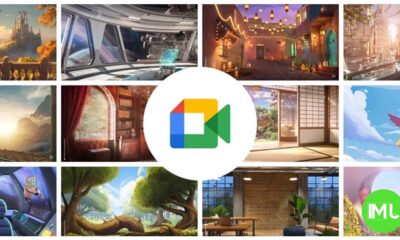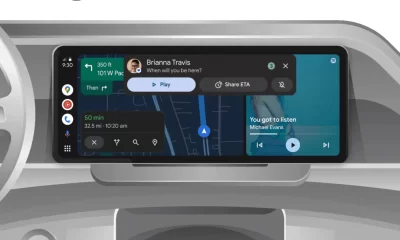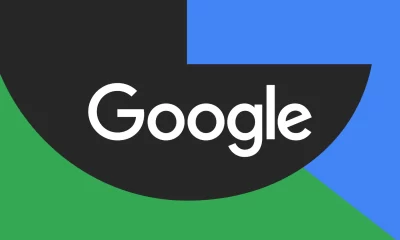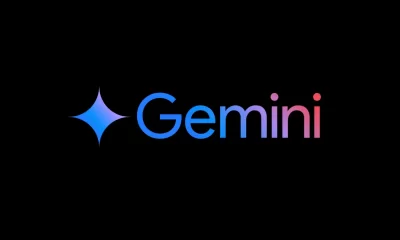Gemini Nano with multimodality enhances Pixel Recorder and could soon power Android Auto
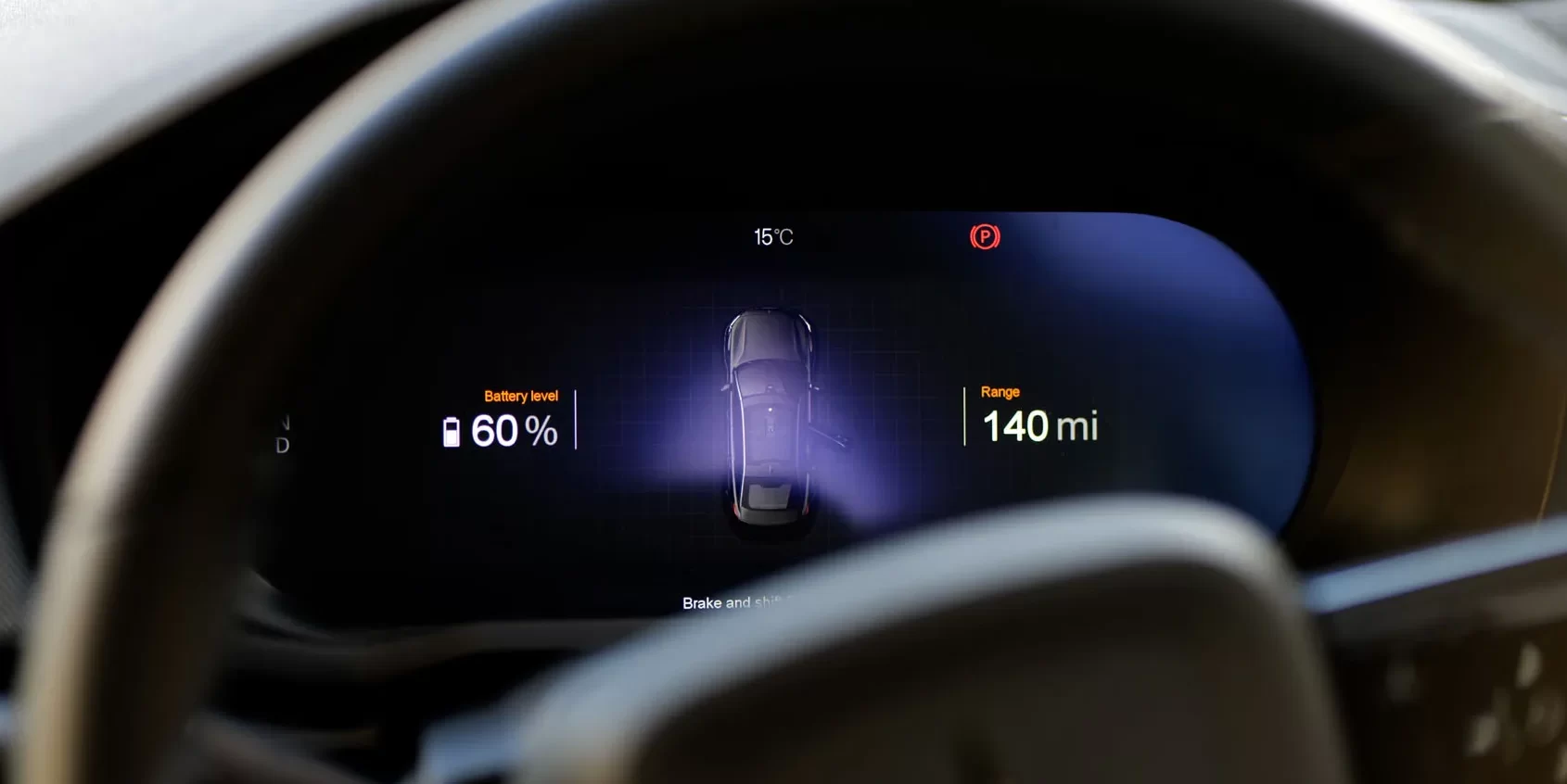
Top 3 Key Points:
- Enhanced Pixel Recorder: The Pixel Recorder now uses Gemini Nano with Multimodality, doubling its capacity and improving audio, text, and image integration.
- Improved User Experience: The upgraded model boosts app engagement by providing better summaries and extended transcript capabilities.
- Potential in Android Auto: Signs point to Gemini Nano’s integration into Android Auto, promising an AI-driven, enhanced user experience.
Google’s Pixel Recorder app has recently undergone significant upgrades, particularly on the Pixel 9 series, thanks to the integration of Gemini Nano with Multimodality. This advanced model not only handles text but also seamlessly processes audio and image inputs. According to Google, this version is nearly twice as large as its predecessor, making it more capable, accurate, and scalable. As a result, developers can achieve high-quality outputs without extensive fine-tuning, enabling more innovative applications.
The introduction of Gemini Nano’s AI-driven summaries last year led to a noticeable increase in app engagement and user retention. Users have embraced the new summarization feature, using it multiple times a day, which in turn has boosted the number of saved recordings by 24%.
Although Google hasn’t fully detailed the capabilities of the new multimodal version, they did hint that it’s three times more sophisticated than the original version on the Pixel 8 Pro. This advancement allows the Recorder app to summarize longer transcripts and assess grammar quality more effectively.
Developers behind the Recorder app have built upon their existing work with Gemini Nano to incorporate multimodality, streamlining the integration process. While this required additional fine-tuning, the transition was smoother thanks to the existing dataset.
In addition to these improvements, Google is also exploring new ways to integrate Gemini AI across its apps and services. For instance, there’s evidence that Gemini Nano could soon be part of Android Auto. In the latest version of Android Auto, several clues point toward this integration, including a new sparkle icon associated with AI features and references to a “GeminiLiveAssistantAction” function within the app’s code.
If Gemini Live becomes part of Android Auto, it could offer a significant upgrade to the in-car experience. Currently, Gemini Live is available only to subscribers of Google One’s AI Premium plan, but it doesn’t require special hardware, suggesting that it could be accessible to all Android Auto users on the correct plan. While it’s still early in development, this integration has the potential to bring AI-driven enhancements to Android Auto, offering users a more intelligent and interactive driving experience.
Overall, the expansion of Gemini Nano into new areas like Android Auto signifies Google’s commitment to integrating advanced AI across its ecosystem, potentially reshaping how users interact with their devices shortly.
Google Meet gets a fresh new look with Material 3 design
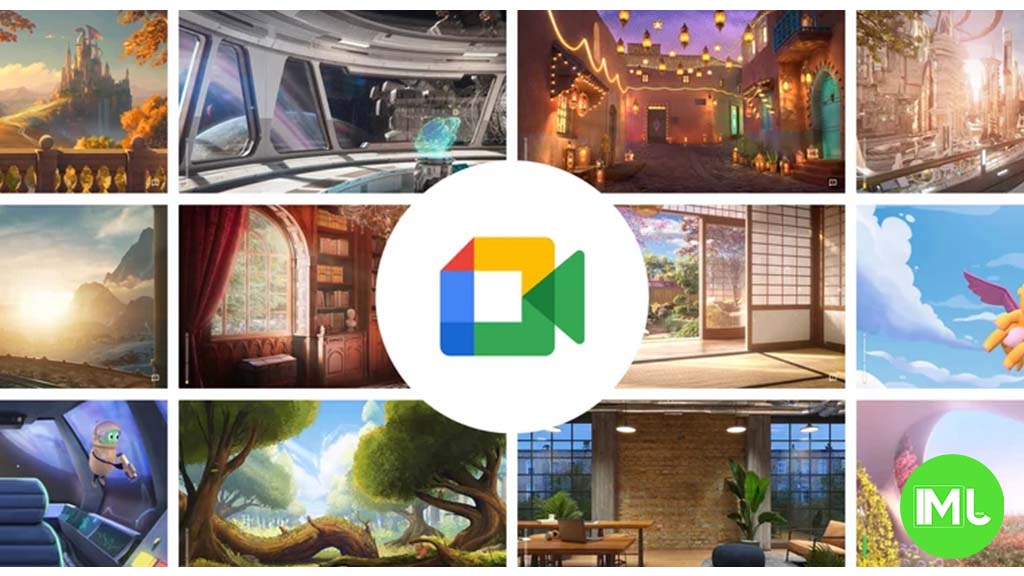
Google Meet is getting a big update to its look, thanks to the new Material 3 design. This change brings a cleaner and more modern style to the video calling app, making it easier and more enjoyable to use.
With Material 3, Google Meet now has rounder buttons, softer colors, and better spacing between elements. The main controls, like the microphone, camera, and end call buttons, are now larger and easier to tap. The icons and text are also clearer, which helps users find what they need quickly during a call.
Another improvement is the new “expressive” color system. This feature lets the app’s colors match your device’s wallpaper or theme, giving each user a unique and personalized experience. The changes also make Google Meet more accessible, as the new design is easier to read and use for everyone, including people with vision difficulties.
These updates are rolling out to both web and mobile versions of Google Meet. Google says the new look will help people feel more comfortable and focused during their meetings. Overall, the Material 3 update makes Google Meet not only look better but also work better for all its users.
Android
Easy ways to change Android Auto’s look with light and dark themes
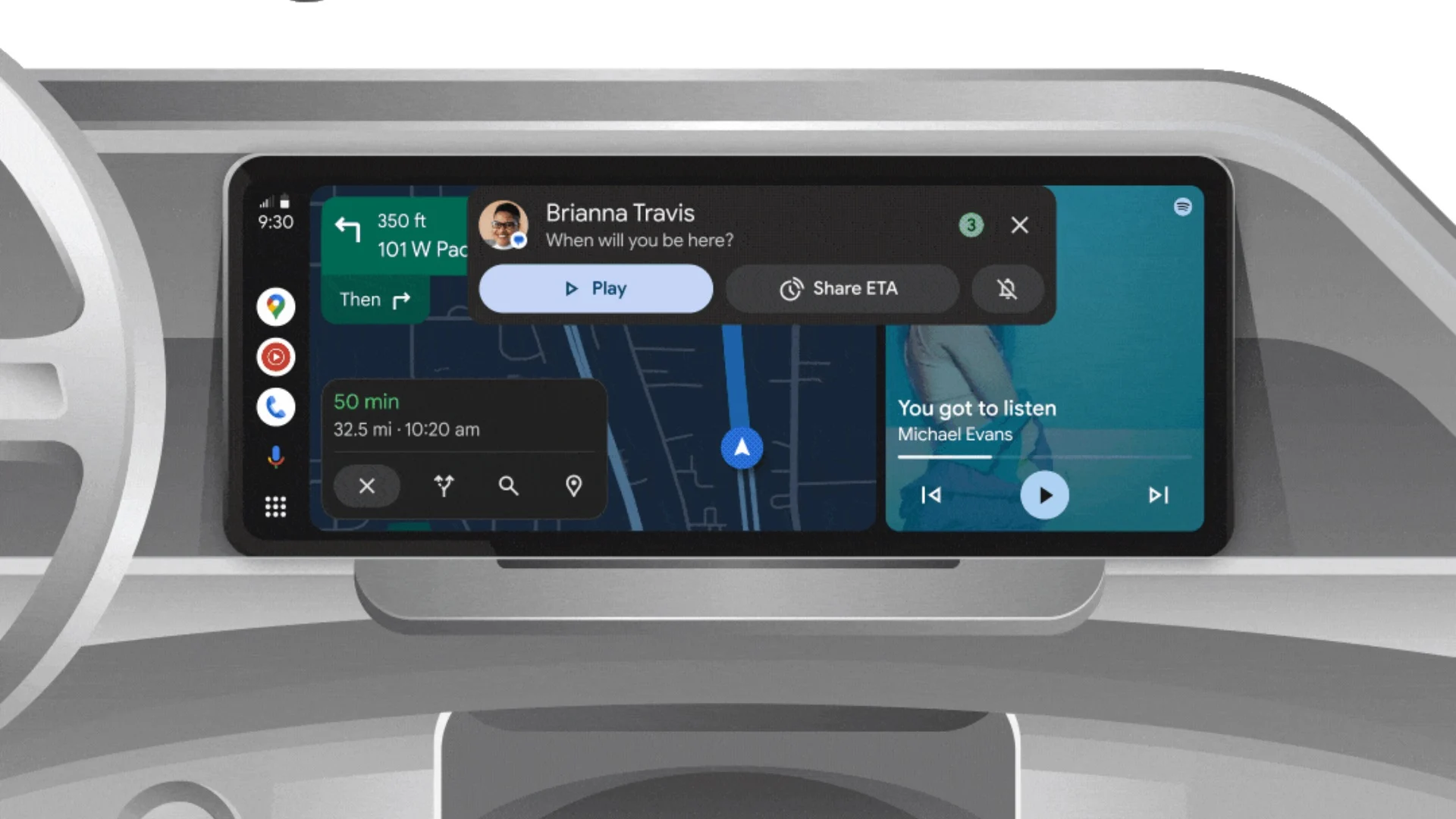
Android Auto is a helpful tool that lets you use your phone’s apps safely while driving. It connects your phone to your car’s screen, making it easier to use maps, music, and calls. One of the features many people like is the ability to change how Android Auto looks by switching between light and dark themes.
How to switch between light and dark themes
Android Auto offers two main themes: light and dark. The light theme uses brighter colors, which can make the screen easier to see during the day. The dark theme uses darker colors, which can be more comfortable for your eyes at night or in low light.
To change the theme, follow these steps:
- Open the Android Auto app on your phone.
- Go to the settings menu.
- Find the “Theme” option.
- Choose between “Light,” “Dark,” or “Set by car” (this lets your car decide the theme based on the time of day or your car’s settings).
Why themes matter
Using the right theme can make driving safer and more comfortable. The light theme is good for bright days, while the dark theme helps reduce glare at night. Having these options means you can pick what works best for you, making Android Auto easier to use in any condition.
In short, Android Auto’s theme options are simple to use and help you drive more safely by making the screen easy to see, no matter the time of day.
Google Drive and Files by Google get fresh updates for easier use

Google is rolling out some helpful updates to two of its popular apps: Google Drive and Files by Google. These changes are designed to make managing your files and watching videos much smoother.
First, Google Drive is getting a new video player. Now, when you upload a video to Drive and open it, you’ll notice a fresh look that matches Google’s latest design style. The controls, like play and pause, are easier to use and look cleaner. This update makes it simpler to watch videos directly in Drive without needing to download them first.
Meanwhile, the Files by Google app is also getting a makeover. The app is adopting Google’s Material 3 design, which means it looks brighter and more modern. The buttons and menus are easier to see and use, making it simpler to find, move, and organize your files. There are also new color options and improved icons, so everything feels more user-friendly.
Both updates show Google’s commitment to making its apps more helpful and enjoyable to use. Whether you’re watching videos in Drive or sorting files on your phone, these changes aim to save you time and make things less complicated. If you use these apps, keep an eye out for these new features—they should arrive soon!
-

 Apps1 year ago
Apps1 year agoGboard Proofread feature will support selected text
-

 News1 year ago
News1 year agoSamsung USA crafting One UI 6.1.1
-

 Apps1 year ago
Apps1 year agoGoogle Contacts app testing new Besties Widget
-
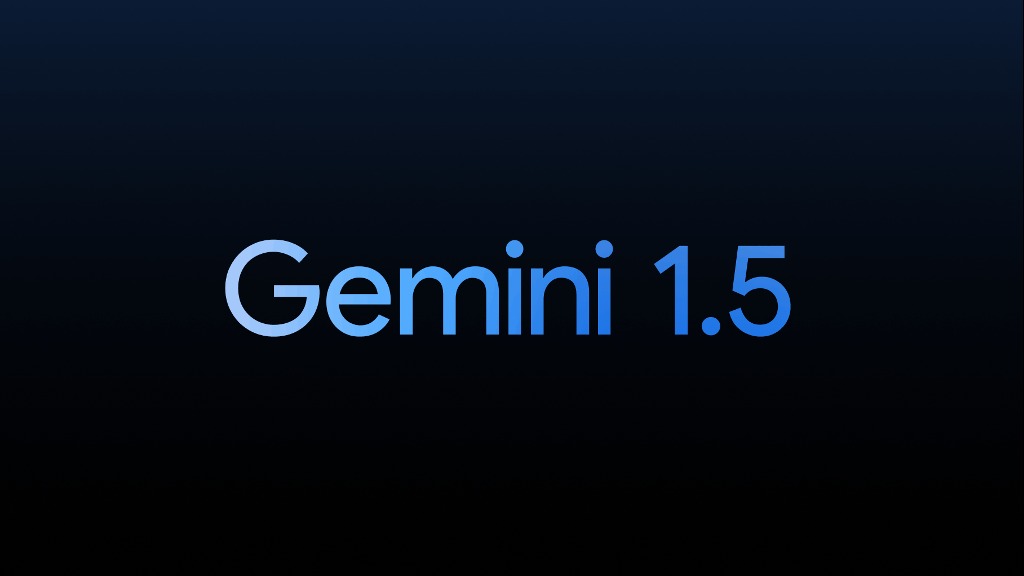
 AI12 months ago
AI12 months agoGoogle Pixel 9 Pro may come with a complimentary one-year Gemini Advanced subscription
-
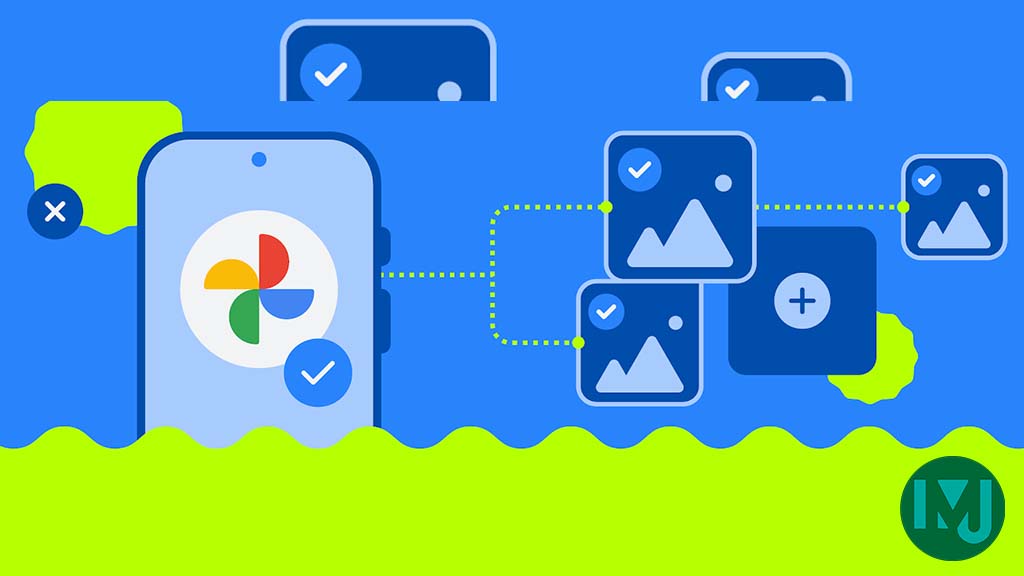
 Apps12 months ago
Apps12 months agoGoogle working on a new video editing feature for its Photo app
-

 News1 year ago
News1 year agoBreaking: Samsung Galaxy S22 may get Galaxy AI features
-
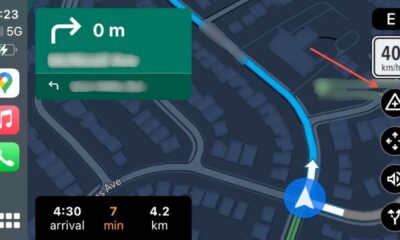
 Apps12 months ago
Apps12 months agoGoogle Maps lets you report traffic jams and accidents on Apple CarPlay, but not on Android Auto
-

 Apps1 year ago
Apps1 year agoGoogle Messages app will transform MMS chats into RCS

